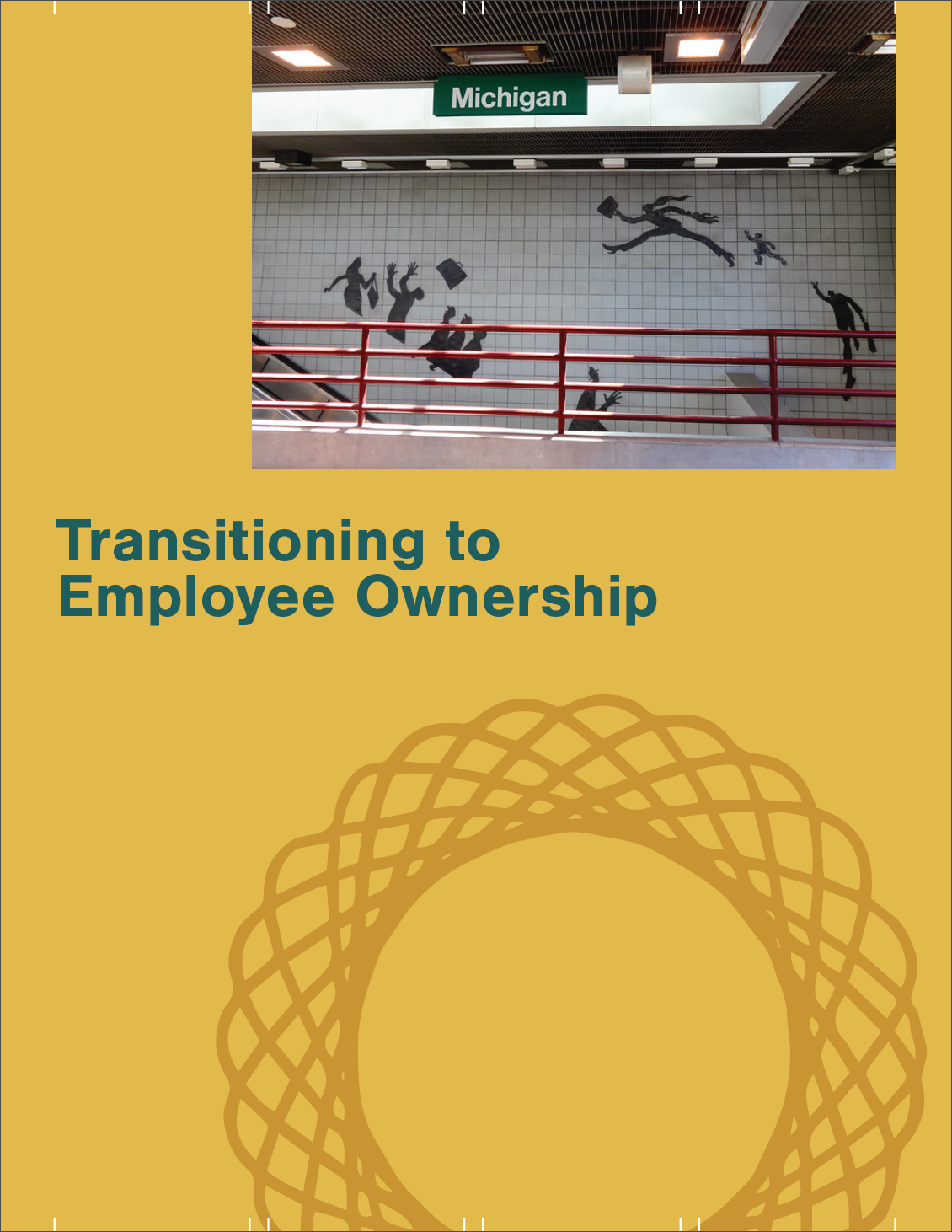Succession Planning Toolkit

Transitioning to Employee Ownership
What is employee ownership?
Changing to an employee-owned model requires leaders who are ready to embrace a new model for economic mobility based on fairness and opportunity.²² The key differences between a conventional business and an employee-owned business are the elements of control and ownership. In a traditional business model like a public corporation, the true owners are shareholders who buy stock on the stock exchange, but they do not run the business. Executives and managers run it, and the rest of the employees report to them. In an employee-owned company, the employees both own and benefit from the success of the business, according to the models we discussed: ESOP, EOT or Worker-owned cooperative.
One of the first decisions in converting to an employee-owned model is to determine if every employee will be allowed to be a member. In some cases, it may not make sense for all workers to be owners. For example, worker co-ops in a seasonal industry might want to restrict membership to year-round workers; or co-ops with new workers may institute a probationary period of at least six months to see if it’s a good fit. Some co-ops treat the general manager as ‘hired expertise’ or marketing personnel as performing a vital function but not one that defines its essential nature. Some co-ops allow management staff to be members, but not to serve on the board. Companies can choose a style that fits their circumstances.²³
Advantages of employee ownership
The worker cooperative structure has many advantages, especially for small and microbusinesses. The idea is easy to understand and the entity is simple and relatively inexpensive to establish, and it offers significant tax benefits on top of a more secure retirement.²⁴ However, many decisions must be made and those logistics can be time consuming. The benefits of employee ownership are far-reaching for the business, the owner who is trying to sell, and the workers who become employee-owners.
Benefits to businesses
Employee-owned companies tend to outperform similar companies with conventional ownership because they have higher productivity, growth, and innovation; higher morale leading to lower costly employee turnover; improved longevity; and a more lasting legacy.²⁵ They even improve product and service quality by promoting the development of workers’ skills.²⁶ The process of selling your company to your employees provides new skills and financial understanding within their current jobs – or upskilling. It also gives them the opportunity to learn new skills outside of their current job – or reskilling.
Benefits to worker owners
Employee-owned companies offer better pay and benefits – sometimes significantly – on average $2 more per hour.²⁷ These benefits can include flexible work schedules, retirement plans, parental leave, and tuition reimbursement. Employee-owners are also more likely to have savings to cover unexpected expenses and emergencies.²⁸ Younger workers enjoy a greater opportunity of having a voice in key decisions like layoffs, and everyone enjoys the more secure retirement options. In participating in the ownership and operation of their company, most workers build financial skills that are transferable to their personal lives. Employee-owned companies have substantially more job stability than non-employee-owned businesses, staying 50% longer than other types of companies because employees are more likely to stay when they feel valued and are compensated fairly.
Benefits to communities
Employee-owned businesses also create important links to a stronger society. Of all the business models available, employee-owned businesses circulate more money into the local economy.²⁹ They tend to remain in their location longer, don’t drain local wealth to absentee owners since its owners are also residents,³⁰ result in higher participation in local events, and build local assets. As a result, their communities have more resilience for economic downturns with less reliance on government programs.³¹
Financing employee ownership and worker-owner (WO) transitions
There are many local financial resources to help in converting your company from one form of business structure to an employee-ownership structure. Locally, Detroit has several nonprofits that can help with the process. Together the many steps that must be taken during the beginning phase of any ownership transition is called the due diligence process. This is when a prospective buyer gets a comprehensive appraisal of a business, especially to establish its assets and liabilities, and evaluate its commercial potential. See page 30 for a directory of financing sources for ownership transitions to employees.
Deal structure
Due diligence consists of document collection, deciding on a financial/operational model, verifying the model and writing a plan for transition. Then, all steps are finalized and implementation begins. This can take anywhere from 6 months to 2 years, depending on many factors.
How the owner is repaid
Business owners are typically paid 50% of the sale price up front and repaid the remainder through quarterly profits (never directly from WOs). Because the wealth fund does not receive money back from its loan until the co-op starts making money, it has regular support check-in with WOs to ensure that the process is on track.
These check-ins consist of:
Discussing issues/challenges that arise
Modifying existing plans as needed
Providing ongoing trainings
Ensuring the revenue is on target
The Detroit Metro region is fortunate to have many resources for business owners. Several of these technical assistance providers are nonprofits who will advise owners for free and can do many of the steps needed under one umbrella. For specialty help you still may need other technical assistance providers such as lawyers, accountants, financial advisors, business brokers, or lenders (more than just banks). The next section lists some recommended technical assistant providers.










